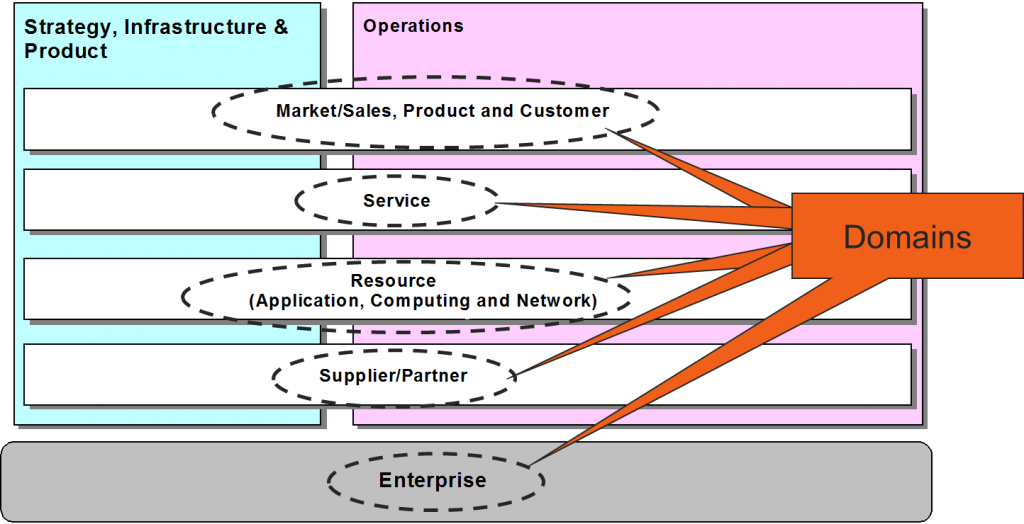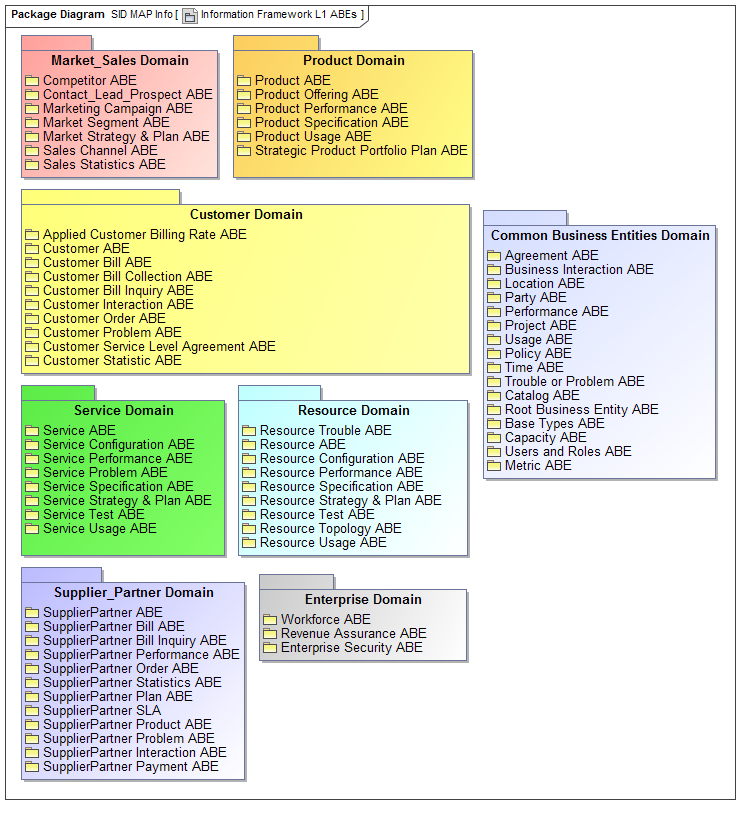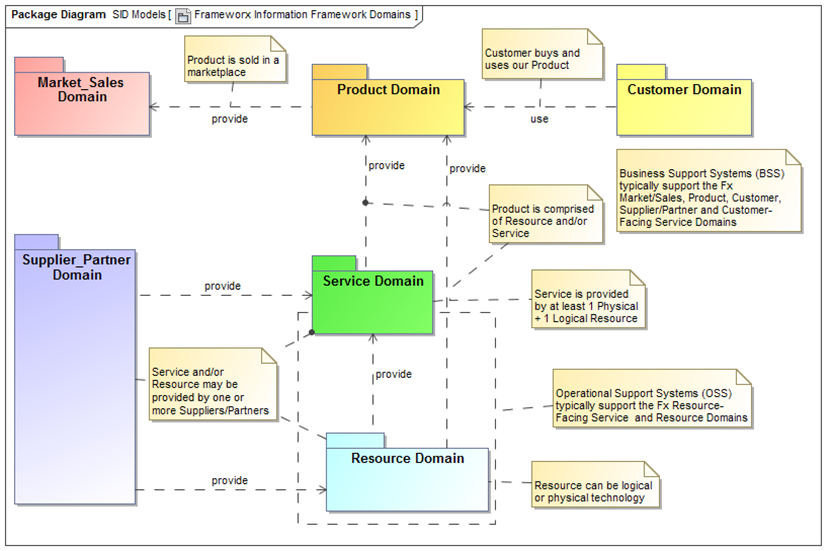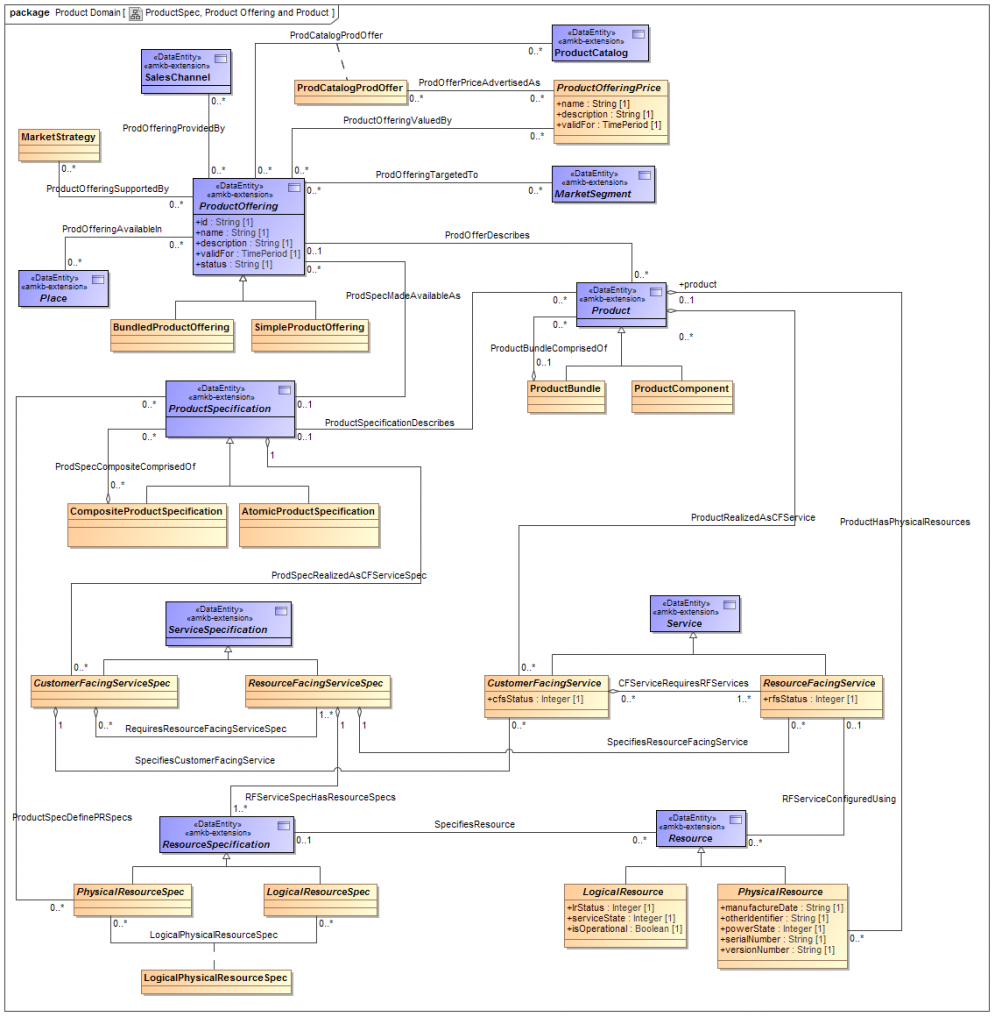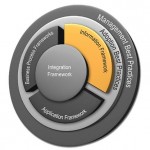
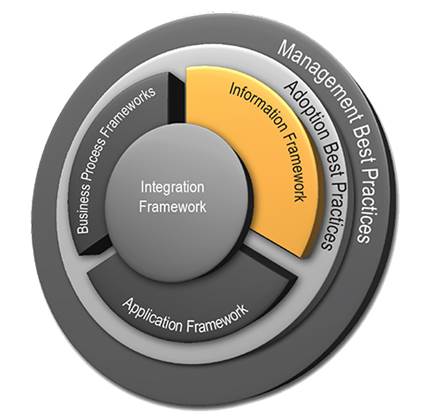 The Frameworx Information Framework provides a reference model and common vocabulary for all the information required to implement Business Process Framework processes. It reduces complexity in service and system integration, development and design by providing an off-the-shelf information model that can be quickly adopted by all parties.
The Frameworx Information Framework provides a reference model and common vocabulary for all the information required to implement Business Process Framework processes. It reduces complexity in service and system integration, development and design by providing an off-the-shelf information model that can be quickly adopted by all parties.
There are two perspectives to the Information Framework; one is as an information model and the other is as a data model, which is based on the information model. Therefore the Information Framework can be used to harmonize both information and data models from other sources.
The Information Framework enables reuse via the separation of a technology neutral (information) model from a technology specific (data) model. More than one data model can be generated or developed from a single base information model.
Several existing models and sources of requirements contributed to the creation of the Information Framework: ITU-T M.3100 generic network information model; and DMTF CIM definition of management information for IT systems, networks, applications and services. A continuing source of requirements for the Information Framework is the Business Process Framework.
Behavior is not modeled in the Information Framework as that is addressed by the TMF Frameworx Integration Framework. What is modeling in the Information Framework are the things of interest to the business (entities), relationships between things (associations) and the details that characterize things (attributes).
The Information Framework was designed bottom-up by recognizing the things of interest to the business. These may be tangible, active or conceptual things. Business entities are characterized by attributes and participate in relationships with other business entities. Business entities typically move through a well defined lifecycle and a good source of requirements for understanding this behavior can be found in the Business Process Framework L2 definitions.
Information Framework Business Entities are grouped into Aggregate Business Entities (ABE), which represent a well defined set of information that characterizes a highly cohesive set of entities, loosely coupled with entities in other ABEs.
Collections of ABEs associated with specific management areas are grouped into domains, which are consistent with the L1 horizontal process groupings in the Business Process Framework.
The 7 management areas represented above, plus the Common Domain, provide the primary organizing mechanism for the Information Framework as shown in the Information Framework Domain and L1 model:
In total the TMF Frameworx Information Model contains 1,500+ classes along with their associations and attributes, which can be represented at the highest level as a set of interacting management areas, or Domains:
At the class level the core structural model of Frameworx, which supports the top-level Domain interaction model is shown here:
This static, end-state class diagram can be understood by referring back to the Business Process Framework and recognizing that the information represented here is governed, designed, implemented, managed and operated by L2 business processes that reside in most of the L1 vertical and horizontal process groupings.
A mapping between the Product Domain L1 ABEs and the primary as well as secondary Business Process Framework L2 business processes can be generated from the model to produce a report that looks like the following:
We can see from these sample mappings that the Business Process Framework activity requires information, which can be defined by using the Information Framework.
The next step in this series is to explore the Application Framework, which provides a definition of types of capability that might be required to support business activity and provide access to the needed information.
